There are a lot of ways to size up buildings, whether by measuring their height, comparing styles of architecture or dissecting their histories. But in the era of climate change, more and more emphasis is being placed on a building’s “green” credentials, as environmental impact leads decisions around design, construction and operations. On Earth Day, look through CNN Style‘s round-up of noteworthy green buildings from around the world.
Bahrain World Trade Center 1 and 2 (Bahrain)
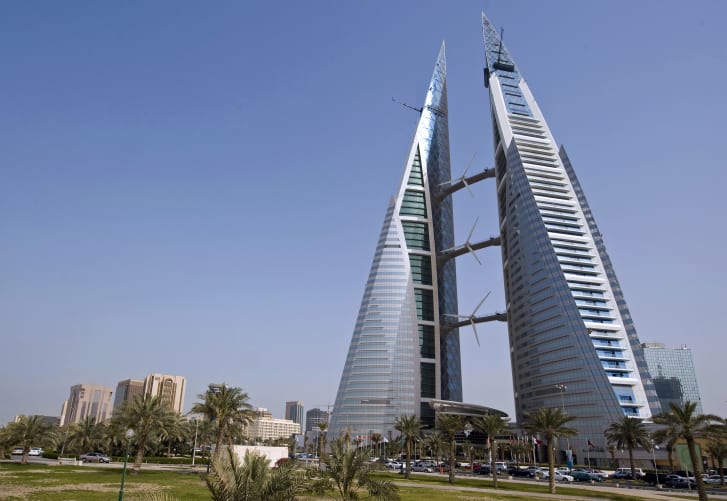
The twin towers of the World Trade Center in Manama, capital city of Bahrain, use the wind to full advantage. Credit: Andia/UIG/Getty Images
Opened: 2008 | Use: Offices | Design: Atkins
Reaching an incredible 787 feet, the futuristic towers of Bahrain’s World Trade Center complex are optimally positioned to take advantage of the island nation’s desert winds, with three turbines mounted on sky bridges between the towers to generate electricity.
The towers’ shapes, reminiscent of the Arab dhow sailing ships, help funnel wind to the turbines, which supply about 15% of the buildings’ electricity. Reflective pools at the towers’ base help with cooling via evaporation.
Marco Polo Tower (Hamburg, Germany)
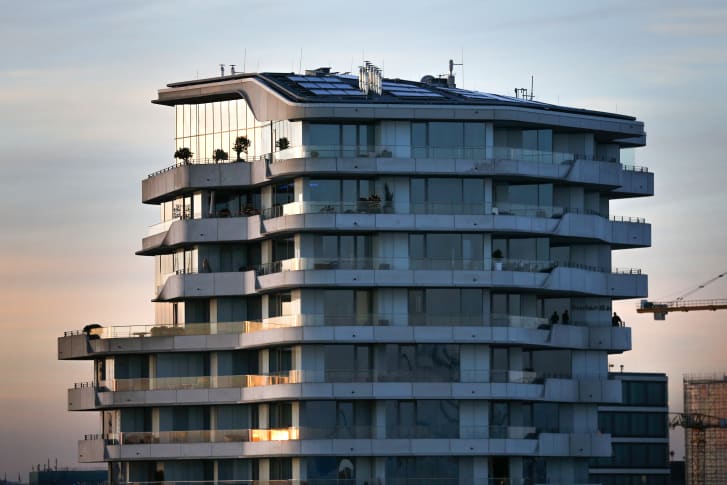
Set on the banks of the Elbe River, Marco Polo Tower is one of Hamburg’s most striking buildings. Credit: Franziska Krug/German Select/Getty Images
Opened: 2010 | Use: Residential | Design: Behnisch Architekten
Like its trailblazing namesake, Marco Polo Tower in Hamburg ventured where few buildings had gone before. Each floor of the apartment building is turned a few degrees away from the one below, around an axis. This allows for recessed facades that protect residents from direct sun and negates the need for electrical air conditioning.
Other green features, according to Behnisch, include a heat exchanger on the roof that turns warm air into a cooling system, and natural ventilation that means residents can sleep soundly without being disrupted by outside noise.
ACROS Fukuoka Prefectural International Hall (Fukuoka, Japan)
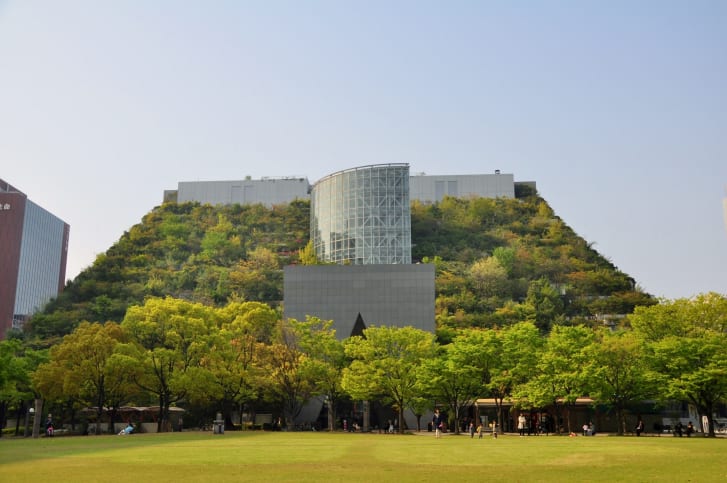
With ACROS Fukuoka Prefectural International Hall, the public didn’t lose a park — it just gained a building! ACROS is an acronym for Asian Crossroads Over the Sea.
Credit: Shutterstock
Opened: 1995 | Use: Mixed used, including concert hall | Design: Emilio Ambasz and Associates
The city of Fukuoka in southern Japan got into the green architecture movement early with ACROS. One side looks like a regular commercial building, but the other is something straight out of your Hanging Gardens of Babylon fantasies. It has a series of 15 garden terraces that reach up to about 197 feet, according to Metaefficient.com.
The project was born of limited options and ingenuity. Fukuoka residents were livid about losing their last public green space in the center of town, so architect Emilio Ambasz conjured up a compromise by bringing the public green space upward. The terraces not only look gorgeous, but also moderate the building’s temperature and support insects and birds.
Torre Reforma (Mexico City)
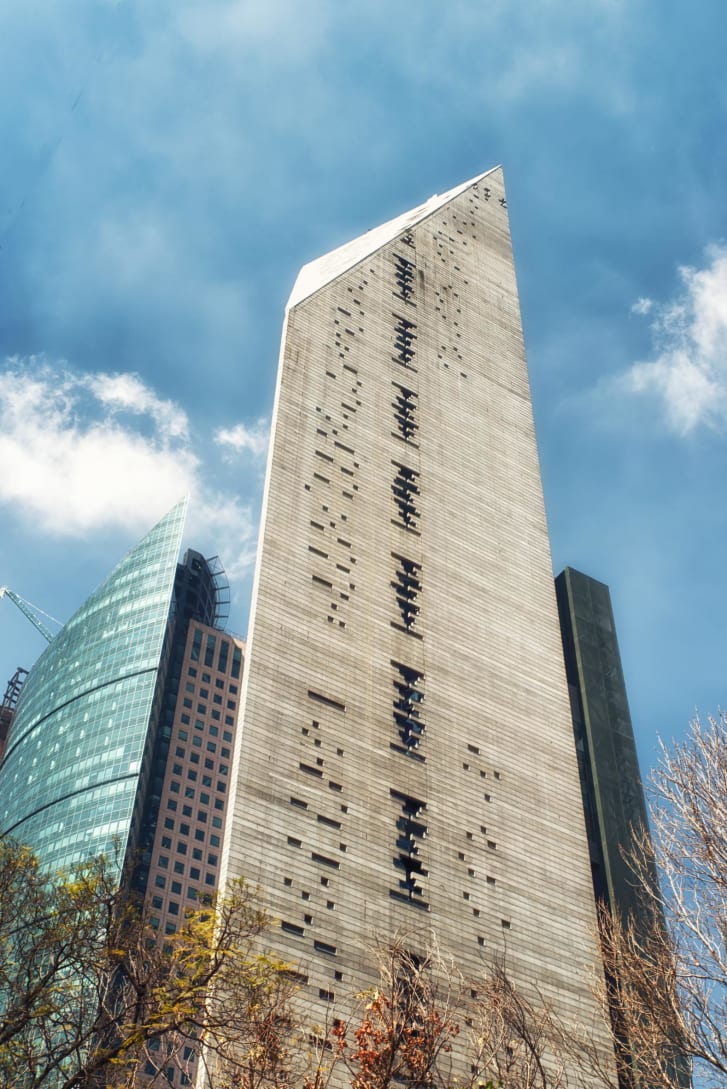
Torre Reforma (or Reforma Tower in English) is Mexico City’s tallest building and it helps lead the way in sustainability there.Credit: Shutterstock
Opened: 2016 | Use: Offices | Design: LBR&A Arquitectos
Torre Reforma rises to 807 feet — higher than any other building in the Mexican capital — and stands tall on energy-saving measures, too. Arup, the engineering firm on the project, says the tower’s slimness maximises the amount of natural light let in, which in turn cuts down on the need for electric lights; and when the weather permits, controls can automatically open windows before dawn to let in cool air as a form of natural ventilation. The tower, which has LEED platinum certification, comes with another important bonus: It’s built to withstand a major earthquake, a vital consideration in the quake-prone city.
The Edge (Amsterdam, Netherlands)
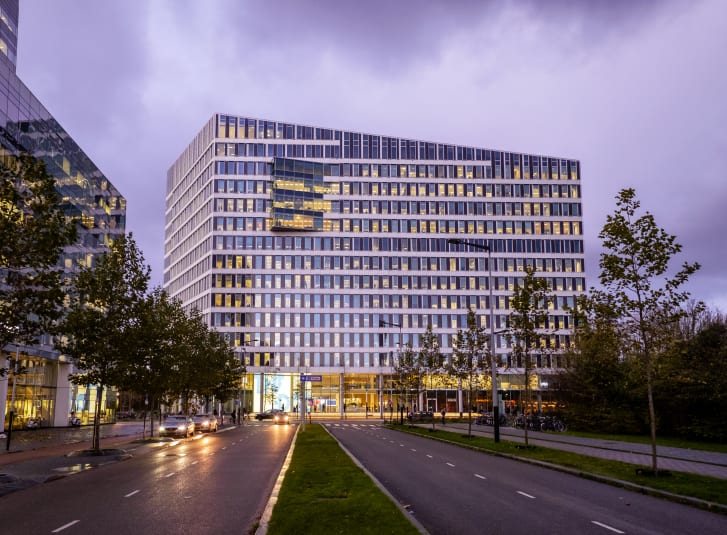
The Edge, headquarters of Deloitte, is one of the greenest and smartest office buildings in the world. Credit: Shutterstock
Opened: 2014 | Use: Offices | Design: PLP Architecture
The Edge, a light, bright and app-controlled building with a large atrium as its nucleus, is as green as it is worker-friendly — a key directive by PLP Architects when designing the building.
Eschewing traditional electric lights and wiring, LEDs are powered by a “digital ceiling” with computer cables connected to sensors, anticipating lighitng needs rather than running at a steady rate. The architects estimate an 80% savings over traditional lighting. The skin of the building is made of solar panels. Temperatures are regulated by pumping warmer and cooler water from different levels in an aquifer. Workers can even adjust their window blinds with the app. The Edge got an enviable sustainability score of 98.3% from the British rating agency BREEAM.
See more of The Edge in this 2015 video from CNN’s Richard Quest.
PARKROYAL Collection Pickering (Singapore)
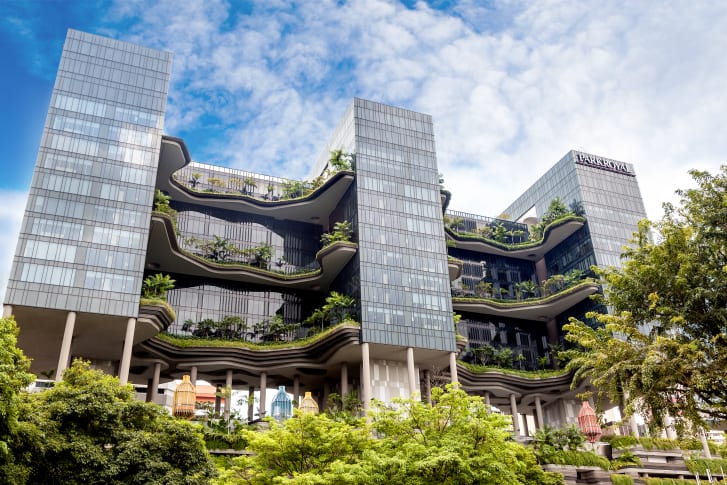
PARKROYAL Collection Pickering incorporates the tropical climate of Singapore into the building. Credit: iStock Editorial/Getty Images
Opened: 2013 | Use: Hotel | Design: WOHA Architects
PARKROYAL Collection Pickering takes obvious inspiration from Singapore’s tropical environment. The design is inspired by terraformed rice paddies, and numerous sky gardens have been inserted along the building’s facade. They deliver luxuriant greenery, including palm trees, to public areas and guest room balconies. These also provide a natural cooling effect. WOHA also incorporated crevasses, waterfalls and gullies into the design. These features are designed to be self-sustaining, taking advantage of Singapore’s abundant rainfall to irrigate all those plants through a drip system.
One Angel Square (Manchester, United Kingdom)
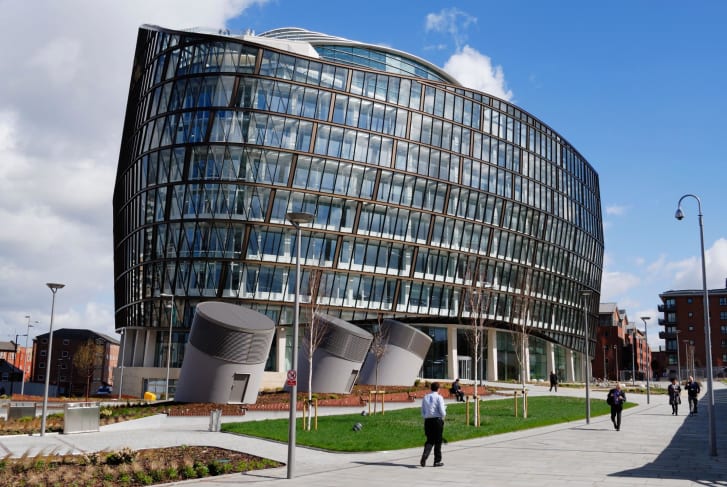
One Angel Square is lighting the way to a greener future in Manchester. Credit: Alamy
Opened: 2013 | Use: Offices | Design: 3DReid
Manchester helped lead the way during the Industrial Revolution, so it seems fitting one of its 21st century buildings is helping lead the way to a greener future. 3DReid designed One Angel Square with flexibility in mind — and brought sustainability bonuses with it.
The building’s structure and systems allow new tenants to easily rearrange and reorganize space to fit their needs. This saves on refit costs and the energy bills that go with them.
The building also has a double-skinned facade to help reduce heating and cooling costs, underground concrete tubes that bring in cool air through a heat exchanger, and stylish furniture made from recycled waste pallets. It received a BREEAM score of 95.16%.
Eastgate Centre (Harare, Zimbabwe)
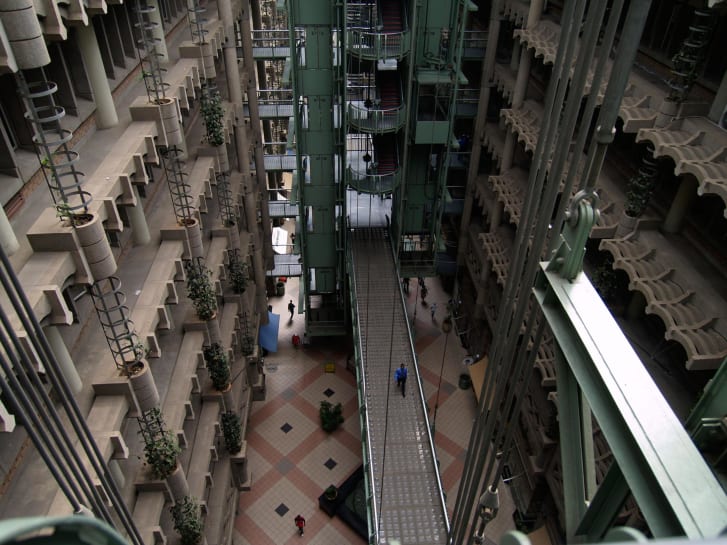
The innovative Eastgate Centre takes a lesson from one of Africa’s most successful engineering groups — termites. Credit: Alamy
Opened: 1996 | Use: Shopping center and office | Design: Mick Pearce
Termites — those notorious chewers of wood and destroyers of homes — are the design inspiration for one of Africa’s most remarkable green buildings. Thanks to the biomimicry talents of architect Mick Pearce, Eastgate Centre has no air conditioning or heating systems in the conventional sense.
Instead, Pearce combined traditional Zimbabwean masonry with design techniques that termites use to keep their mounds at a constant temperature. The result? Natural comfort all year long and lower costs for tenants.



